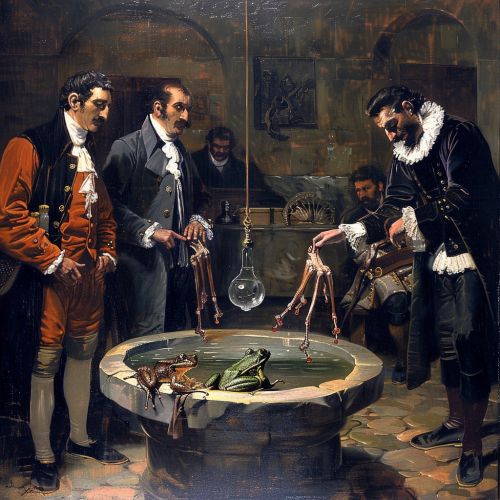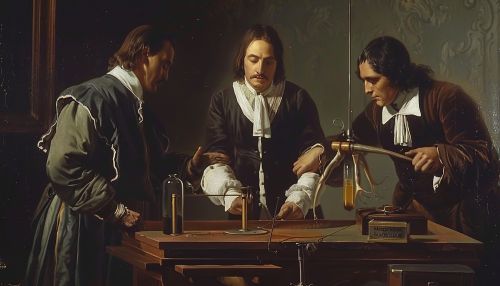Luigi Galvani
Early Life
Luigi Galvani was born on September 9, 1737, in Bologna, Italy. He was the fourth of seven children of Domenico Galvani and Barbara Caterina Foschi. His father was a goldsmith, and his mother came from a family of physicians.
Education
Galvani attended the Jesuit school in Bologna where he developed an interest in physics and natural philosophy. In 1755, he enrolled at the University of Bologna to study medicine. He graduated in 1759 with a degree in medicine and philosophy.
Career
After graduation, Galvani started his career as a lecturer in the University of Bologna's Faculty of Medicine. He taught anatomy and surgery, and his lectures were popular among students. He was appointed professor of anatomy in 1775.
Research and Discoveries
Galvani's most significant contribution to science was his discovery of bioelectricity. He noticed that frog legs twitched as if alive when struck by a spark of electricity. This observation led him to further experiments and the eventual discovery of the electrical nature of the nerve impulse, which he termed "animal electricity".


Animal Electricity
Galvani's experiments on 'animal electricity' marked the beginning of electrophysiology, the science of the electrical activities of living cells. He believed that this 'animal electricity' was a life force that existed in the muscles and nerves of animals.
Galvanism
The term 'Galvanism' was coined by Galvani's contemporary, Alessandro Volta, who was a pioneer in the field of electricity. Galvanism refers to the contraction of a muscle that is stimulated by an electric current.
Later Life and Death
In his later years, Galvani faced many challenges. His refusal to take an oath of allegiance to the new Cisalpine Republic, a French client republic in Northern Italy, led to his dismissal from the University of Bologna in 1798. He died on December 4, 1798, in Bologna.
Legacy
Galvani's work on animal electricity has had a profound impact on various fields of science. His discoveries paved the way for the development of the battery and the field of electrophysiology. Today, Galvani's work continues to be a significant part of scientific history.
